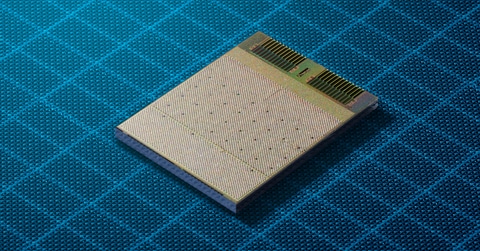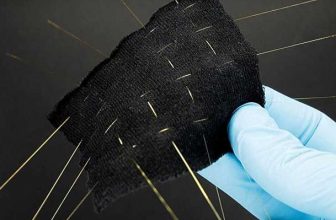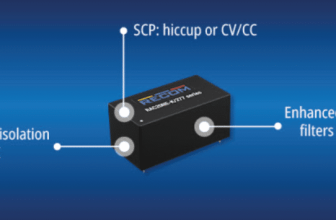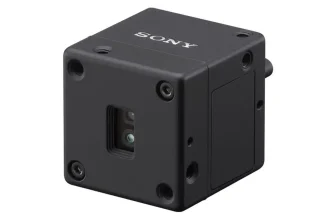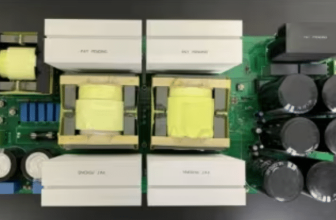
Check out our latest products
As global PCB makers flock to India, molecular spectroscopy is in the spotlight. From how it is powering smarter failure analysis and material ID in electronics to its rising demand, Dr Atul Lavand of Thermo Fisher Scientific tells everything to EFY’s Yashasvini Razdan.

Q. How is molecular spectroscopy used in the semiconductor and electronics industry?
A. In electronics, our primary focus is on research and development (R&D) teams, particularly those involved in printed circuit board (PCB) manufacturing. Molecular spectroscopy plays a very important role in PCB manufacturing, especially in failure analysis. If a PCB fails, our Fourier transform infrared (FTIR) microscope can map and analyse specific areas of the board. The FTIR light is directed onto the identified region, producing a spectrum. This spectrum is then matched with a reference library to identify the material responsible for the failure. Once identified, manufacturers can refine their processes to prevent similar issues in the future.
We supplied our FTIR microscopes to major electronics manufacturers, where they are being used for PCB failure analysis.
Q. Are there other spectroscopy techniques or devices used in molecular spectroscopy?
A. Yes, apart from FTIR spectroscopy, we also have Raman spectroscopy and Raman microscopy. Both techniques complement each other—FTIR is preferred for identifying organic functional groups, while Raman spectroscopy is more suited for inorganic functional groups.

Molecular spectroscopy is applicable to all types of PCBs. Whenever failure analysis is required, the FTIR microscope can be used to identify the material causing the issue.
Q. How does molecular spectroscopy work in analysing multiple layers of coatings in PCBs?
A. The process is straightforward. When a failure occurs, the PCB is placed under the FTIR microscope. The specific area responsible for the failure is mapped, and FTIR light is directed onto it. The light interacts with the material, and the response is detected using a mercury cadmium telluride (MCT) detector. The resulting spectrum is compared with a global reference library to identify the material. Once identified, manufacturers can trace their source in the production process and make necessary adjustments to prevent defects.
Q. What if there are any contaminants or residue in between the coatings?
A. Yes, molecular spectroscopy can detect that as well. If any residue or contaminant is present, spectroscopy can identify its specific spectral signature. This helps manufacturers trace the contamination source, whether from packaging or the production process, and take corrective measures.
Q. India has a limited number of PCB manufacturers, with most companies focusing on assembly. What kind of demand do you see for molecular spectroscopy in this space?
A. You are right; PCB manufacturing is still growing in India. However, several foreign companies are setting up PCB manufacturing units due to favourable government policies. These companies are our main targets. Also, with proposals to set up OSAT (outsourced semiconductor assembly and test) facilities in India, the semiconductor industry is expected to grow. This will likely increase demand for molecular spectroscopy in India.
Q. Are you directly approaching PCB manufacturers, or do you work with large original equipment manufacturers (OEMs) in the electronics industry?
A. We primarily work with large OEMs that manufacture their products in-house.
Q. Who is your target customer within these companies—R&D, sales, or procurement teams?
A. Our main interactions are with R&D teams, as they are responsible for failure analysis and process improvements. We provide our customers with a return on investment (ROI) calculation, demonstrating how the instrument can help recover costs within a year by preventing failures and improving production efficiency.
Q. Does artificial intelligence (AI) play any role in molecular spectroscopy?
A. AI is expected to play a significant role in the coming years, particularly in software for spectral interpretation. Thermo Fisher is working on AI-powered software in molecular spectroscopy, which may be available soon.
Q. Any new innovations or product releases in line to tackle the competition?
A. We continuously enhance both hardware and software. Our latest product, the RaptIR Plus microscope, is designed to meet evolving market demands. Our focus on innovation and providing end-to-end solutions from pre-sales to post-sales support differentiates us. We provide both service and application support to our customers.
In the future, we are working towards a single-point contact model for electronics customers, simplifying access to our solutions across R&D, quality control, and quality assurance divisions.
Q. Do you only cater to the biggies, such as Foxconn or MSMEs and startups? How can the latter connect with you?
A. We have a customer support excellence centre in Bengaluru, primarily for biopharmaceuticals, and one in Mumbai, catering to both pharmaceutical and electronics industries. Customers can visit our Mumbai lab or send samples for analysis. We support both startups and academia through our application support lab, providing sample analysis and result interpretation. For MSMEs and startups, we have a range of FTIR solutions, from benchtop models to high-end instruments.
Q. What is the minimum order quantity (MOQ) for purchasing your instruments?
A. There is no MOQ; customers can purchase a single or multiple units based on their requirements.
Q. What role do channel partners play in your business?
A. Channel partners contribute significantly to lead generation and customer support.
Q. What hiring trends is the company following?
A. We primarily hire professionals but also train freshers. Our service team hires engineers, while our application support centre prefers PhDs.


![[5G & 2.4G] Indoor/Outdoor Security Camera for Home, Baby/Elder/Dog/Pet Camera with Phone App, Wi-Fi Camera w/Spotlight, Color Night Vision, 2-Way Audio, 24/7, SD/Cloud Storage, Work w/Alexa, 2Pack](https://m.media-amazon.com/images/I/71gzKbvCrrL._AC_SL1500_.jpg)



![[3 Pack] Sport Bands Compatible with Fitbit Charge 5 Bands Women Men, Adjustable Soft Silicone Charge 5 Wristband Strap for Fitbit Charge 5, Large](https://m.media-amazon.com/images/I/61Tqj4Sz2rL._AC_SL1500_.jpg)
